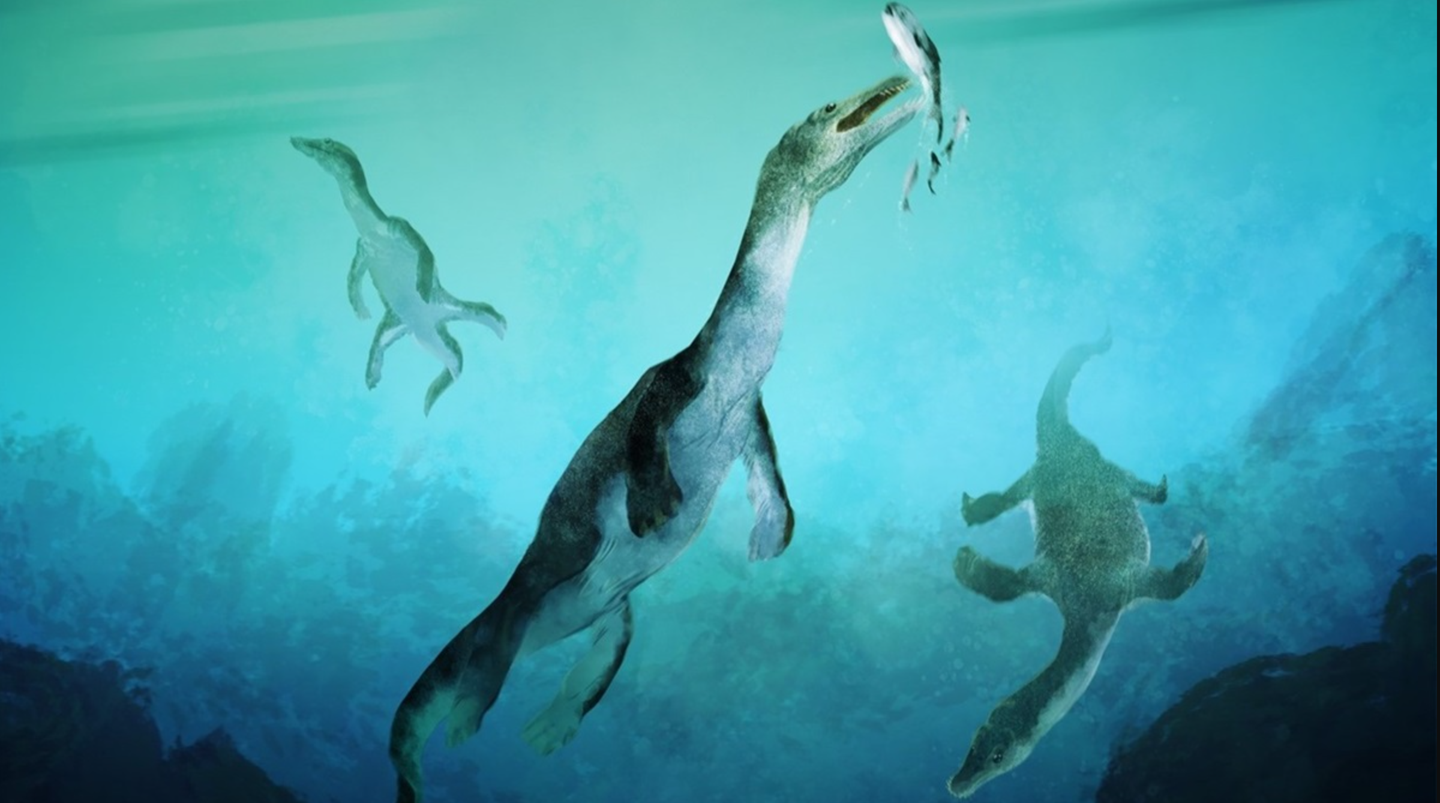Oldest sea-going reptile unearthed in New Zealand – rewrites history of marine animals
Scientists from Uppsala University has identified the oldest known fossil of a sea-going reptile from the Southern Hemisphere.

In a groundbreaking discovery, a team of international scientists from Uppsala University has identified the oldest known fossil of a sea-going reptile from the Southern Hemisphere.
This remarkable find—a nothosaur vertebra—was uncovered on New Zealand’s South Island, dating back 246 million years to the dawn of the Age of Dinosaurs. At that time, New Zealand was situated along the southern polar coast of a vast super-ocean named Panthalassa.
Reptilian Conquerors of the Seas
Reptiles first ventured into marine habitats following a catastrophic mass extinction event around 252 million years ago. This extinction decimated marine ecosystems but set the stage for the Age of Dinosaurs.
Evidence of this pivotal transition has been sparse, limited to select regions like the Arctic island of Spitsbergen, northwestern North America, and southwestern China. However, the discovery of this nothosaur vertebra in New Zealand broadens our understanding of early marine reptiles in the Southern Hemisphere.
Sauropterygians, a diverse group of marine reptiles that included the iconic plesiosaurs, dominated the seas for millions of years before dinosaurs roamed the land.
Nothosaurs, the predecessors of plesiosaurs, could grow up to seven meters long and featured four paddle-like limbs for swimming. Their flattened skulls and slender conical teeth were ideal for snaring fish and squid.
Related Stories
A Fossil’s Journey Through Time
The nothosaur vertebra was originally discovered during a geological survey in 1978, nestled in a boulder at the foot of Mount Harper on New Zealand's South Island. Its true significance went unrecognized until an international team of paleontologists from Sweden, Norway, New Zealand, Australia, and East Timor collaborated to analyze the fossil.
Dr. Benjamin Kear from The Museum of Evolution at Uppsala University, lead author of the study, emphasized the fossil's importance. “The nothosaur found in New Zealand is over 40 million years older than the previously oldest known sauropterygian fossils from the Southern Hemisphere. We show that these ancient sea reptiles lived in a shallow coastal environment teeming with marine creatures within what was then the southern polar circle,” explains Kear.
Rewriting History of Marine Reptiles
Nothosaurs, whose oldest fossils date back 248 million years, were thought to have thrived in a northern low-latitude belt, extending across the Panthalassa super-ocean’s northeastern to northwestern margins. Their journey to such distant regions has sparked debate. Did they migrate along northern coastlines, traverse inland seaways, or rely on ocean currents to cross the vast Panthalassa?
The New Zealand discovery challenges these theories. Using a time-calibrated evolutionary model of sauropterygian global distributions, the research team suggests a new narrative. “We show that nothosaurs originated near the equator, then rapidly spread both northwards and southwards at the same time as complex marine ecosystems became re-established after the cataclysmic mass extinction that marked the beginning of the Age of Dinosaurs,” Kear explains.
Global Warming and Ancient Migrations
The onset of the Age of Dinosaurs was marked by extreme global warming, which likely contributed to the success of these marine reptiles at the South Pole. Kear suggests, “This also indicates that the ancient polar regions were a likely route for their earliest global migrations, much like the epic trans-oceanic journeys undertaken by whales today.”
This finding opens new avenues for understanding how these ancient creatures navigated their prehistoric world. “Undoubtedly, there are more fossil remains of long-extinct sea monsters waiting to be discovered in New Zealand and elsewhere in the Southern Hemisphere,” Kear says, hinting at the potential for future discoveries.
The discovery of this ancient nothosaur vertebra not only sheds light on the history of marine reptiles in the Southern Hemisphere but also offers a glimpse into a world long forgotten—a world where colossal reptiles roamed the oceans during the early stages of the Age of Dinosaurs. As scientists continue to explore these prehistoric depths, we may soon uncover even more secrets hidden within the ancient seabeds of New Zealand and beyond.
For more science news stories check out our New Discoveries section at The Brighter Side of News.
Note: Materials provided above by The Brighter Side of News. Content may be edited for style and length.
Like these kind of feel good stories? Get the Brighter Side of News' newsletter.
Joshua Shavit
Science & Technology Writer | AI and Robotics Reporter
Joshua Shavit is a Los Angeles-based science and technology writer with a passion for exploring the breakthroughs shaping the future. As a contributor to The Brighter Side of News, he focuses on positive and transformative advancements in AI, technology, physics, engineering, robotics and space science. Joshua is currently working towards a Bachelor of Science in Business Administration at the University of California, Berkeley. He combines his academic background with a talent for storytelling, making complex scientific discoveries engaging and accessible. His work highlights the innovators behind the ideas, bringing readers closer to the people driving progress.
